Abstract
Purpose
Lung cancer is the leading cause of cancer death in the world, including Korea. The aim of this study was to investigate the clinical features of the lung cancer patients who were seen in a University hospital between 1994 to 1998.
Materials and Methods
We performed a retrospective review of lung cancer clinical information at Kosin University Gospel Hospital from 1994 to 1998. We analyzed the age, gender, pathologic types, treatment methods and survival.
Results
Among 1,547 patients, 1,232 patients (79.6%) were male. The age distribution ranged from 20 to 84 years, and the mean age was 60.2 years old. Squamous cell carcinoma was the most common type of lung cancer (39.7%), followed by adenocarcinoma (23.1%), and small cell carcinoma (16.4%). However, there was an increasing incidence of adenocarcinoma every year. The stages at the diagnosis were I: 6.6%, II: 6%, III: 45.6% and IV: 41.8%. For the small cell carcinoma, 44.6% of the patients were in a limited stage and 55.4% were in an extensive stage. The initial treatments included chemotherapy (46.5%), surgery (15.1%) and radiotherapy (5.1%), but 32.2% of the patients received supportive care only. For the cases receiving surgery, the 5 year survival rate for the stage I patients was 66%, that for the stage II patients was 43.2% and that for the stage III patients was 11.8%. The median survival time (MST) for patients who underwent surgery plus adjuvant chemotherapy was 3.22 year, but the MST of the surgery-treated only patients was 1.51 years. So, adjuvant chemotherapy prolonged survival (p=0.000). On the subgroup analysis, young age and female lung cancer patients who did not receive adjuvant chemotherapy showed poor survival.
References
1. Seo JH, Jeong CS. Death rate statistics of Korea, 2003. Daejeon: Korea National Statistical Office;2004.
2. Korean National Statistical Office. The cause of death statistics. Daejeon: Korean National Statistical Office;2006. Available from:. http://www.cancer.go.kr/cms/statics/mortality/index.html.
3. Jung ER, Son YB, JH Ryu, et al. Clinical features of bronchogenic carcinoma: review of 359 patients. Korean J Intern Med. 1985; 29:775–782.
4. Kim HJ, Jeong MP, Heo DS, et al. Lung cancer in Korea: 1980–1984. Korean J Intern Med. 1994; 46:221–228.
5. Scientific Committee of Korean Academy of Tuberculosis and Respiratory Diseases. The national survey of lung cancer in Korea. Tuberc Respir Dis. 1999; 46:455–465.
7. Kim YC, Kwon YS, Oh IJ, et al. National survey of lung cancer in Korea, 2005. J Lung Cancer. 2007; 6:67–73.

8. Straus GM, Jemal A, McKenna MB, et al. The epidemic of smoking-related adenocarcinoma of the lung: the role of the tobacco industry and filtered and low-tar cigarettes. J Thorac Oncol. 2007; 2:S305.
9. Non-small cell Lung Cancer Collaborative Group. Chemotherapy in nonsmall cell lung cancer: a metaanalysis using updated data on individual patients from 52 randomised clinical trials. BMJ. 1995; 311:899–909.
10. Pignon JP, Tribodet H, Scagliotti GV, et al. A pooled analysis by the LACE collaborative group. JCO. 2008; 20:3552–3559.
11. Risch HA, Howe GR, Jain M, Burch JD, Holowaty EJ, Miller AB. Are female smokers at higher risk for lung cancer than male smokers? A case control analysis by histology type. Am J Epidemiol. 1993; 138:281–293.
12. Kure EH, Ryberg D, Hewer A, et al. p53 mutations in lung tumours: relationship to gender and lung DNA adduct levels. Carcinogenesis. 1996; 17:2201–2205.
13. Ryberg D, Hewer A, Phillips DH, Haugen A. Different susceptibility to smoking-induced DNA damage among male and female lung cancer patients. Cancer Res. 1994; 54:5801–5803.
14. Wei Q, Cheng L, Amos CI, et al. Repair of tobacco carcino-gen-induced DNA adducts and lung cancer risk: a molecular epidemiologic study. J Natl Cancer Inst. 2000; 92:1764–1772.
15. Fasco MJ, Hurteau GJ, Spivack SD. Gender-dependent expression of alpha and beta estrogen receptors in human nontumor and tumor lung tissue. Mol Cell Endocrinol. 2002; 188:125–140.

16. Denissenko MF, Pao A, Tang M, Pfeifer GP. Preferential formation of benzo[a]pyrene adducts at lung cancer mutational hotspots in p53. Science. 1996; 274:430–432.
Figures
Fig. 1.
Pathologic distribution of lung cancer from 1994 to 1998. Adeno: adenocarcinoma, SqCC: squamous cell carcinoma, SCC: small cell carcinoma.
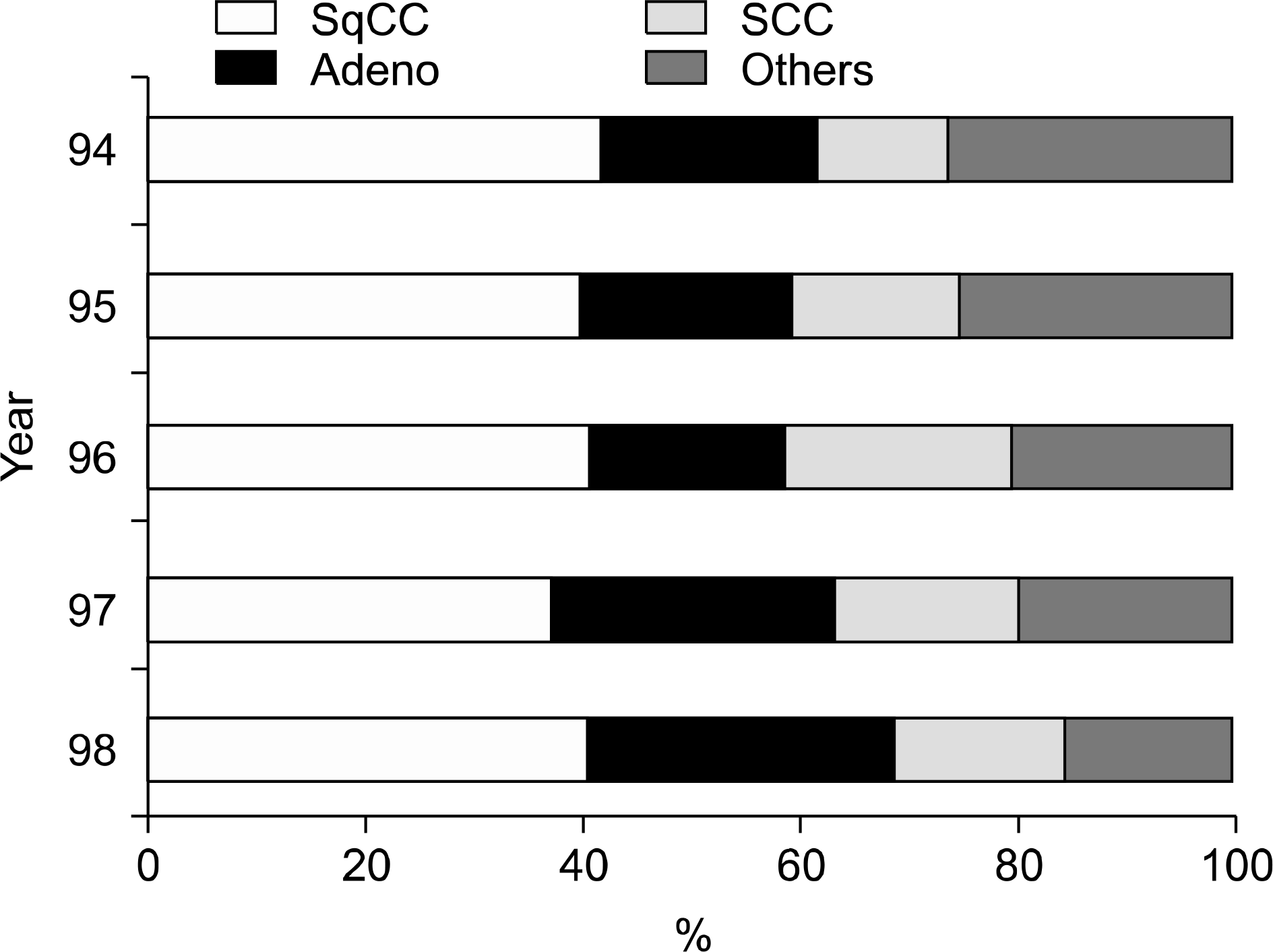
Fig. 3.
Treatment status of all the lung cancer patients. CTX: chemotherapy, Op: operation, RT: radiotherapy, Tx: treatment.
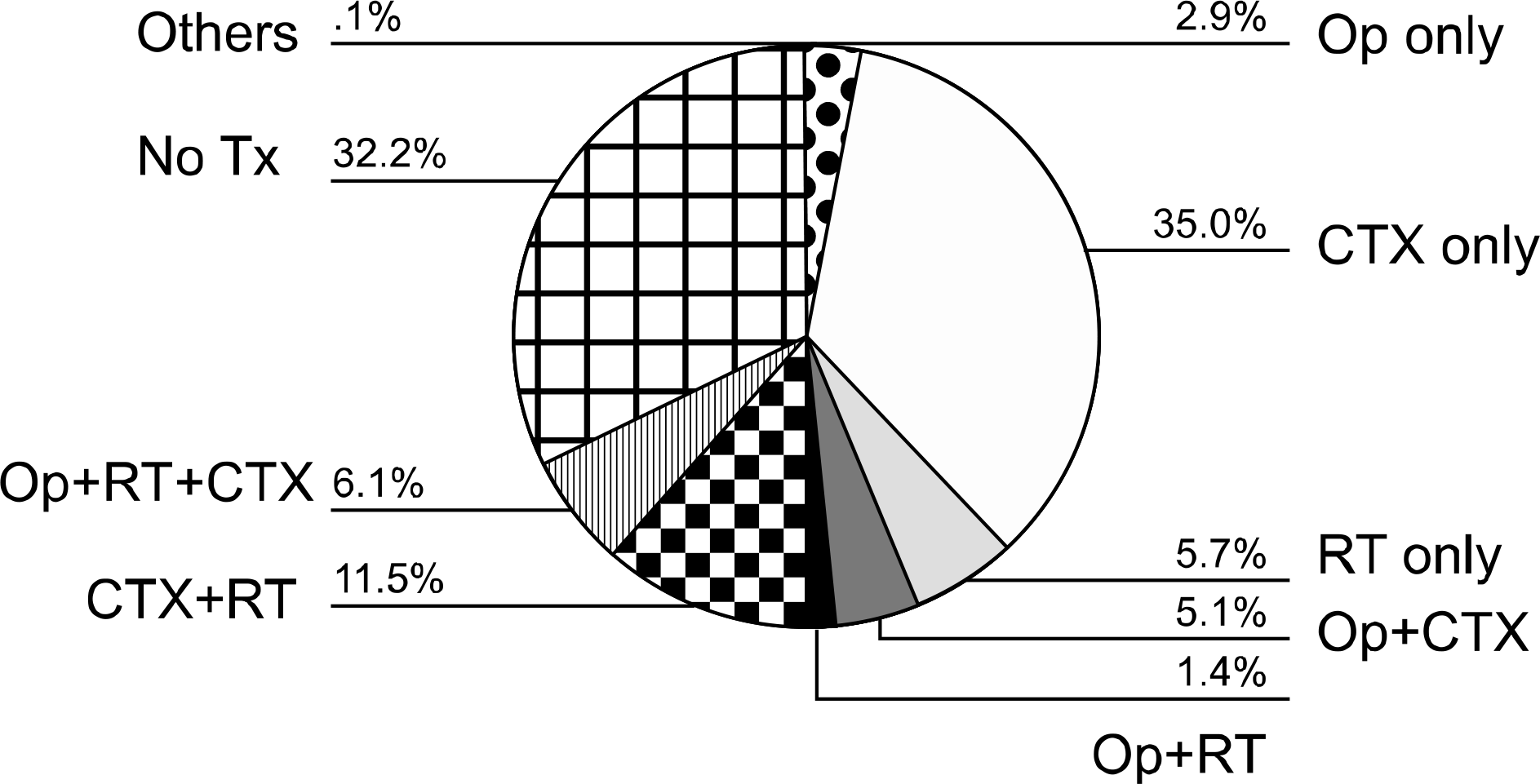
Fig. 4.
Survival curves according to adjuvant chemotherapy (non-small cell carcinoma, n=240). CTX: chemotherapy, Op: operation, RT: radiotherapy.
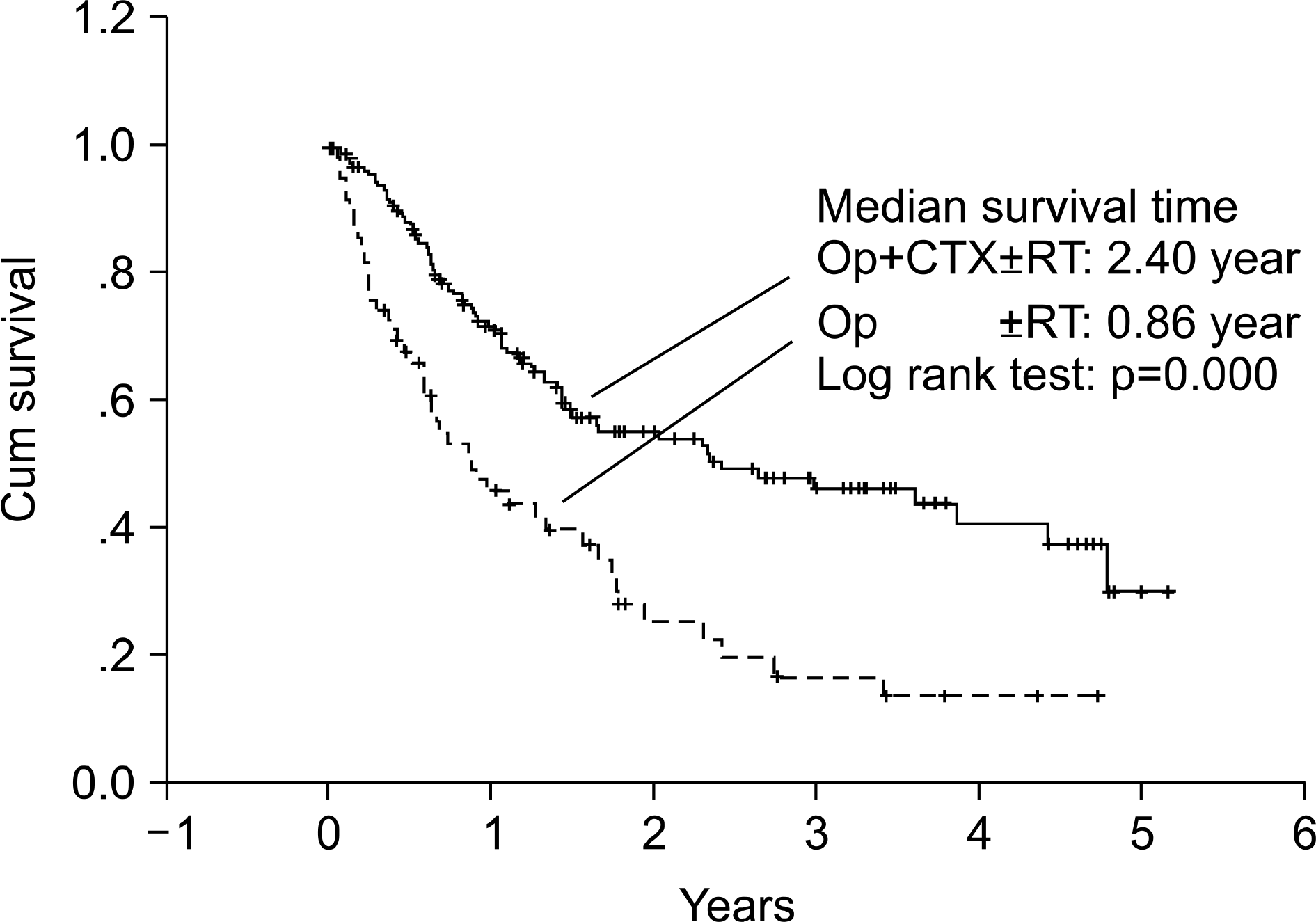




 PDF
PDF ePub
ePub Citation
Citation Print
Print


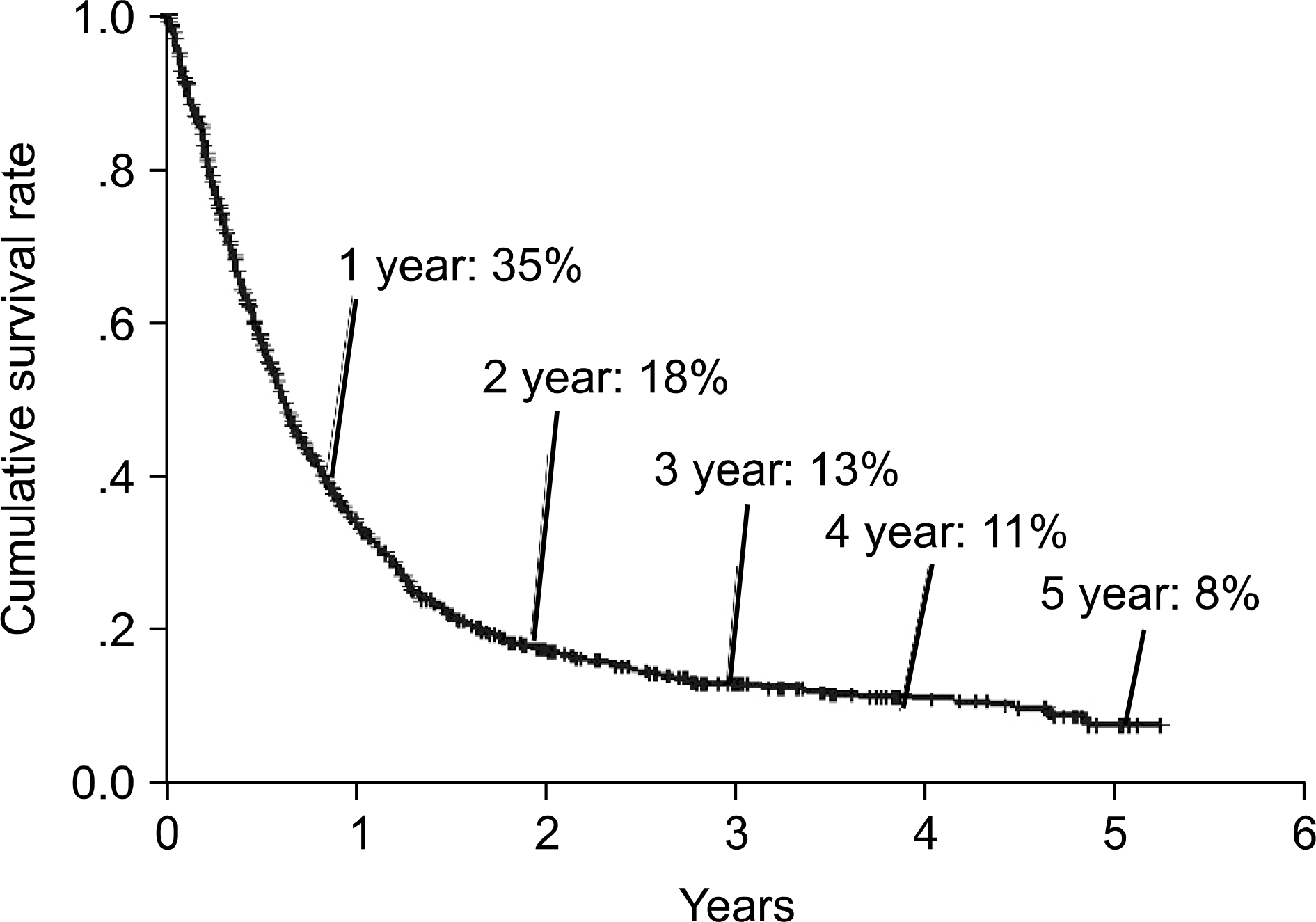
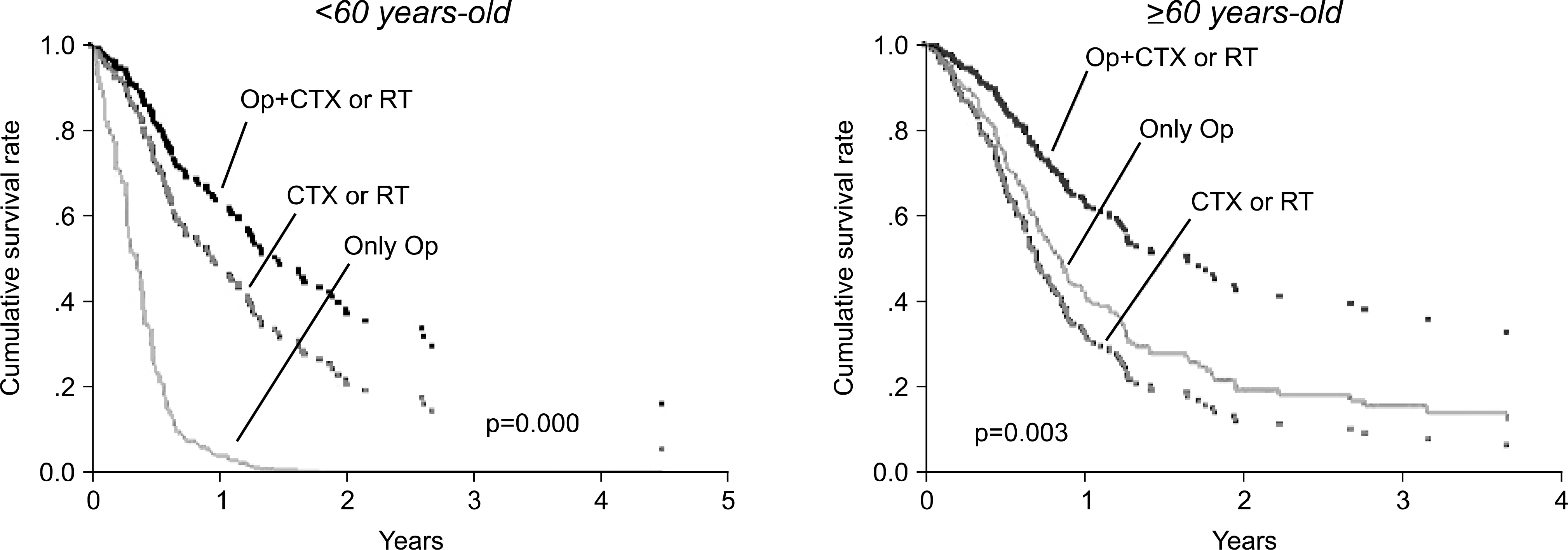
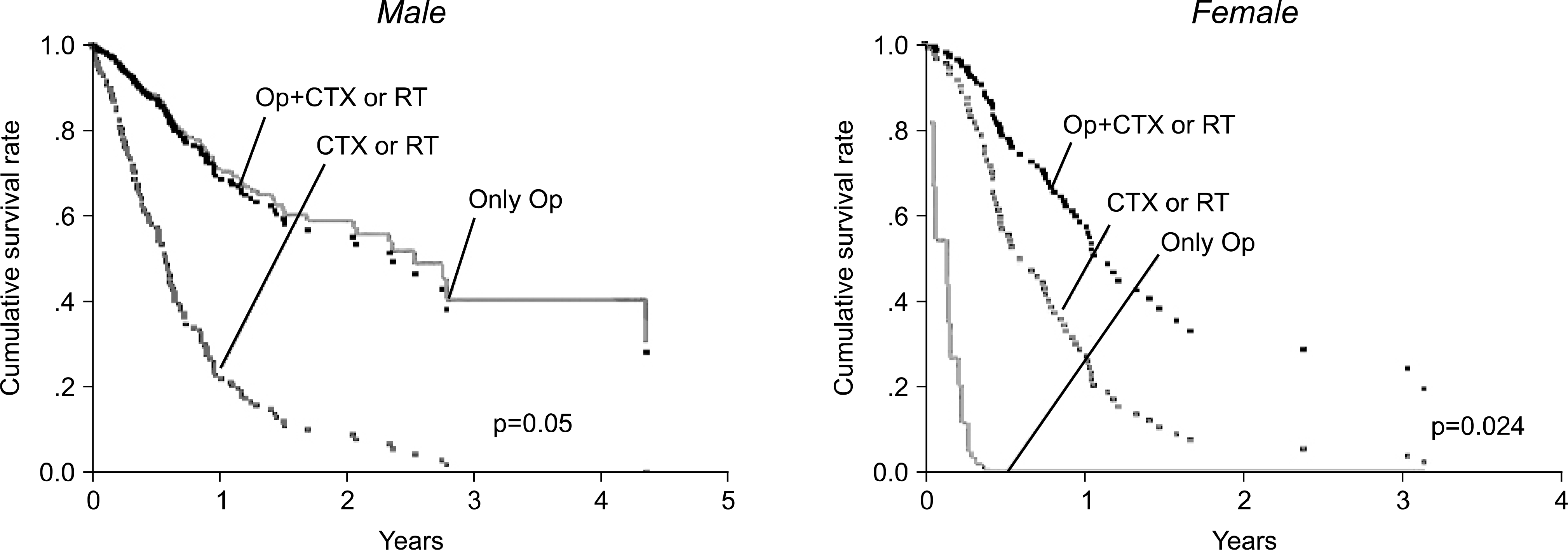
 XML Download
XML Download